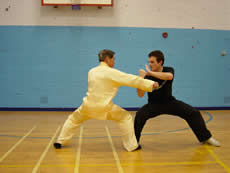A DISCUSSION ON YIELDING

Sifu Marcus Santer
A lively debate in our
Shaolin Wahnam Discussion Forum
results in the following interesting posts which will be very useful to martial artists and other people.
 1. The Concept and Technique of Yielding
1. The Concept and Technique of Yielding
Yielding is to lead the opponent to futility, then his attacking momentum is turned against the opponent himself, thus completing the yang part of the yin-yang harmony. This continuous process is expressed in Chinese as"xian hua hou ji", which means 'first neutralize then attack'. In Shaolin Kung Fu it is expressed as ”dun du”, or ”swallow-shoot”.
Click here to enter.
 3. Kungfu Sets and their Movements
3. Kungfu Sets and their Movements
For example in our Shaolin Kung Fu, the basic set "Lohan Asks the Way" can be performed by new students with correct speed, smallness of circularity, and power issuing postures without any modification to the set. A master can perform exactly the same set but his speed and power can be many times greater, and he can vary the size of circularity or straightness according to his wish. The difference is not in the set, but in the skills employed in performing it.
Click here to enter.
 5. Yielding in Shaolin Kungfu and Wahnam Taijiquan
5. Yielding in Shaolin Kungfu and Wahnam Taijiquan
Because my body is leaning forward it becomes a tempting target for my partners attack. No matter if the attack is a kick or a punch I can respond with “To Tame a Tiger with a String of Beads”. Shifting of the body from the front leg to the back leg, without moving the legs, to ward off an attack is an expression of the “Swallow” technique.
Click here to enter.
 6. Meaningful Flow of Energy in Shaolin Kungfu and Wahnam Taijiquan
6. Meaningful Flow of Energy in Shaolin Kungfu and Wahnam Taijiquan
First of all, you need to maintain the Six Harmonies throughout the yielding process. I talk more about the Six Harmonies in my article on the Tactical Retreat of Shaolin Kung Fu. If you don't maintain the Six Harmonies, then you will find yourself in the precarious position that you described. But as long as you maintain them, your stance will not "crumble."
Click here to enter.
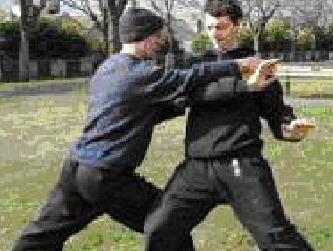 7. The Mark of a Master
7. The Mark of a Master
Sifu can throw us even when we know what he is going to do. I remember him saying:
“This is the mark of a master. You may know what technique he is going to use, and you may also know its counter. Yet, he can still defeat you using that very technique.”
Click here to enter.
 8. Throwing an Opponent within Three Seconds
8. Throwing an Opponent within Three Seconds
I do not consider myself to be in the category of "an experienced Master" but am easily capable of performing this technique in less than a second. I remember learning this technique from Sifu at my first intensive Kung Fu course and also observing other students learning this technique at a later intensive Kung Fu course. Performing it in less than 3 seconds is indeed easily achievable even for "relative beginners".
Click here to enter.
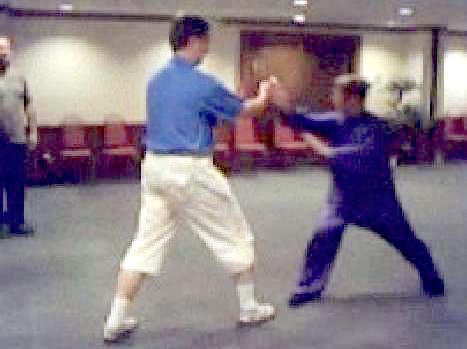 9. Counter against the Pull
9. Counter against the Pull
We did learn the felling technique with Sifu during the recent Intensive Tai Chi Chuan course. I've found it to be very effective against students of my (low) level after coming back home. Actually it was just last Monday that I used it to drop any student who I tried it with. A few weeks ago my teacher here asked me to try any movement against him during push hands. I tried it on him but I was the one on the floor....hehe, he is obviously much higher level than me.
Click here to enter.
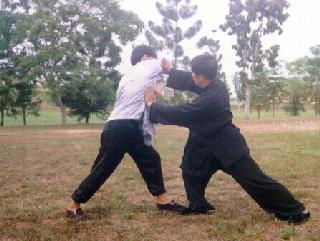 10. Can one Yield and Counter in Three Seconds or Less?
10. Can one Yield and Counter in Three Seconds or Less?
I agree that it requires persistence to develop the skill of a master. But yielding is not only for masters. It can be practiced and used on many levels. The same applies to other tactics, like the "no defense, direct counter" that Simon was talking about earlier. Fresh beginners learn this tactic in our school with the pattern "False Leg Hand Sweep."
Click here to enter.
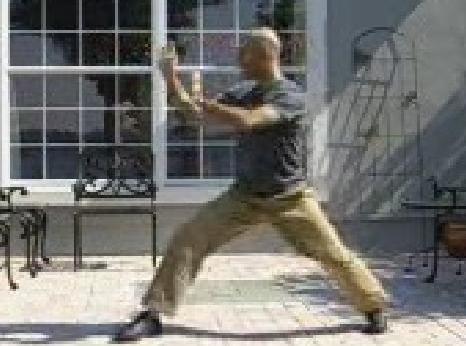 12. Being Tolerant and Courageous
12. Being Tolerant and Courageous
Yes ......................... and a few more thoughts. I don't practice Taijiquan (yet), but the picture and video provided that have demonstrated yielding appear to display (at least to me) basic Taijiquan principles. Why else would you practice Push Hands and Strike Hands? To train gracefulness? I think you practice it because it trains skills and techniques that are very effective in combat situations.
Click here to enter.
 13. Counters against Boxers' Fast Jabs
13. Counters against Boxers' Fast Jabs
There are many effective techniques in Tai Chi Chuan against the fast jab. For example, the Tai Chi Chuan practitioner may use 'Cross Hand Thrust Kick'. He moves diagonally aside, spreads his hands above to distract the opponent, and simultaneously kicks him below (using the strategy "Signal high, strike low"). Here he uses spacing to overcome the opponent's timing. No matter how fast the opponent's jabs are, the Tai Chi Chuan practitioner spaces himself in such manner that they cannot reach him despite their speed.
Click here to enter.
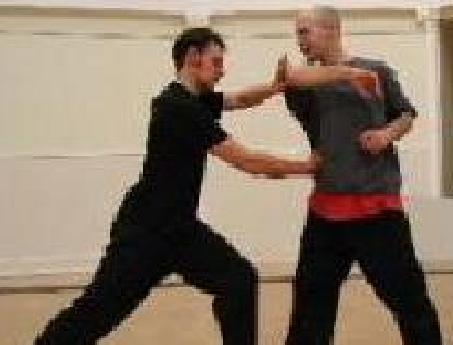 14. Punch Below Sleeves and Jade Girl Threads Shuttle
14. Punch Below Sleeves and Jade Girl Threads Shuttle
Take note that this warding-off movement is circularly backward, and not directly forward as Challenger advocates. Suppose the opponent's jab is coming in a direction from north to south. Challenger's 'peng' moves from south to north, or from south-west to north-east. This is going against the opponent's momentum, and is against Tai Chi Chuan principles. Your ward-off with the palm moves from north-west to south-east. This is using the opponent's momentum, and follows Tai Chi Chuan principles.”
Click here to enter.
 15. Is there a Missing Step?
15. Is there a Missing Step?
I'd like to mention that the footwork was purposely exaggerated in this video. It may be a bit blurry, but if you watch carefully, you can see that I pull the front foot quite far back, and then place it all the way across the line on the pavement. This should be more than enough to simulate the footwork adjustment in the pictures of Simon and Mark. Without the exaggerated footwork, the technique can actually be done faster.
Click here to enter.
 16. From the Ridiculous to the Absurd
16. From the Ridiculous to the Absurd
Both videos do demonstrate his hand technique in one second or less, but not with the same footwork as the photos depict, thus requiring considerably less time to execute. Anthony knows this, which is why he presented the videos in the manner he did. Close...but no cigar! He is barely able to perform the hand technique in the promised amount of time without the extra step required by the still photos, making it highly improbable that his boastful claim could be validated in the promised amount of time with the previously omitted step included. A totally lame and pathetic joke! You completely lose face again! .
Click here to enter.
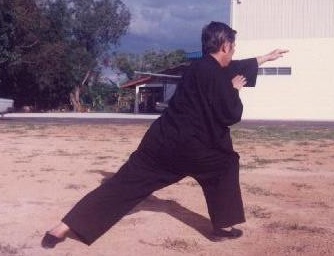 17. Different Benefits and the Intriguing Missing Step
17. Different Benefits and the Intriguing Missing Step
I find it fascinating that people with many years of martial arts experience (Steve and Sifu Stier) can incorrectly analyze the photos of Simon. The technique shown in the video is exactly the same as that shown in the photos. The problem is that you gentlemen do not seem to be familiar with the technique shown in the photos, hence your incorrect analysis
Click here to enter.
 18. One-Second Throws and Big-Movement Releases
18. One-Second Throws and Big-Movement Releases
In our opinion, there's no reason this technique couldn't be performed in the time frame of one second. Counting from the time the push is performed, to the moment when the attacker touches the ground, my performance here is around about 1.2 seconds, and Tapio did it in 1.3 (not bad for someone with just 4 months of practice in Shaolin Kungfu!). Please note that we purposefully softened the fall by taking our time. Tapio hadn't learned safe break-fall until this session, so there was good reason to take it easy.
Click here to enter.
 19. A Taijiquan pattern to Counter All Kicks
19. A Taijiquan pattern to Counter All Kicks
I honestly think you are over-analyzing the pictures. Personally, I wouldn't care even if the location and performers were different in each picture. The technique itself is pictured well. It may be difficult to understand intellectually from the pictures, but it is extremely easy to understand experientially by actually trying it out. In this way, questions about possible extra steps become quite trivial.
Click here to enter.
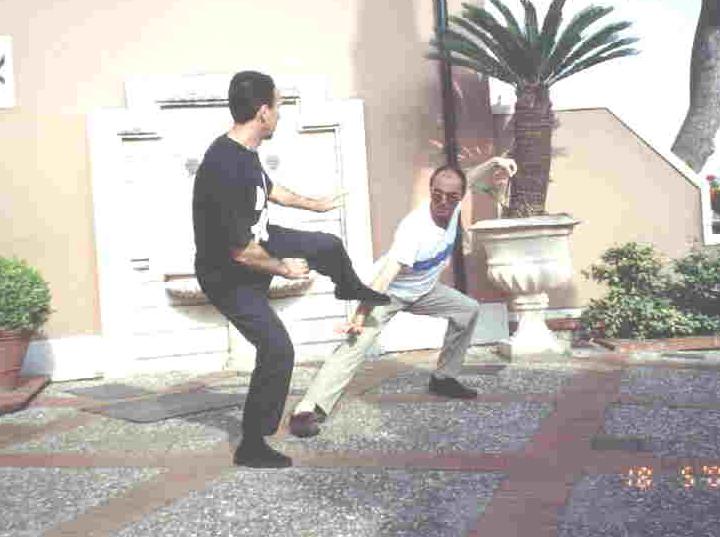 20. Whips and Tigers
20. Whips and Tigers
I enjoyed reading you last post very much, you obviously learnt a lot on your recent Tai Chi Chuan Intensive with Sifu. I remember Sifu saying that these days he thinks a better response to kicks than "Low Stance Single Whip" is "Striking Tiger Poise" followed up by "Fierce Dragon Across Stream". As you are a Wahnam Tai Chi Chuan player I would invite you to comment on "what are the subtle differences between the two patterns"
Click here to enter.
 21. Mistaking Pressing for Yielding
21. Mistaking Pressing for Yielding
The technique you mentioned wasn't yielding. It was a pressing counter. You got to the attacker and neutralized their kick before they managed to attack, so yielding wasn't necessary. What you were practicing was an example of "starting later but arriving first" and "no defence, direct attack". In your case the attack was the defense.
Click here to enter.
 22. A Discussion on Felling Techniques and their Counters
22. A Discussion on Felling Techniques and their Counters
Instead of moving your body forward, shift your body slightly backward and to your right, and simultaneously lift right leg over and beyond his right leg. This is yielding, or neutralizing, and it effectively overcomes his leverage-advantage, with which he throws you. Next, “float” his arms at his elbows. This is deflecting, which not only releases his grip on you but also prevents him from striking you. Then strike his ribs with your left knee. This is countering, often striking him while he is trying to recover his balance due to the unsuccessful movement of his throw.
Click here to enter.
 24. In Search of Kungfu Secrets
24. In Search of Kungfu Secrets
“Embracing Dragon Kick" is one of the secrets Sifu teaches only to his inner chamber disciples or rarely to selected students. I am certain that many of Sifu's inner chamber disciples can remember an occasion where after demonstrating a fantastic move, Sifu has said something like: "This is a Shaolin (or Wahnam Taijiquan) secret. Teach it only to your selected students.”
Click here to enter.
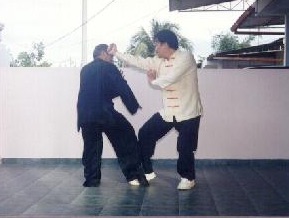 25. Golden Star, Yellow Bee and Being Insubstantial
25. Golden Star, Yellow Bee and Being Insubstantial
This is the secret — one that many masters in the past kept. (I do not know about Sifu's case here.) This is also the continuous process of yielding, deflecting and countering in one smooth movement, and the movement must be large — an important point I mentioned in an earlier post where I disagreed with the Challenger's concept that movements must be reduced in size to be combat effective.
Click here to enter.
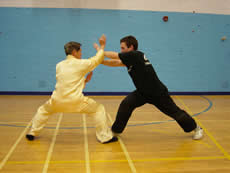 26. Not Difference in Techniques but Difference in Skills
26. Not Difference in Techniques but Difference in Skills
Yielding in a negotiation does not mean giving up or losing, but offering vulnerability through questions about the counterpart's perspective to allow the full debate to happen. Once we have attentively and actively listened to their offer, and have asked with real interest to fill us up with more info about it, showing interest in finding a new outcome, the counterpart usually feels less threatened, opens up and allows for both parts to find a more reasonable outcome.
Click here to enter.
LINKS
A Discussion on Yielding
Courses and Classes
























